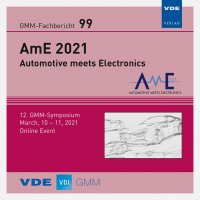Reduction of System Development Time with Early Sensor Prototyping and Measurement-Based Simulations
Conference: AmE 2021 – Automotive meets Electronics - 12. GMM-Symposium
03/10/2021 - 03/11/2021 at online
Proceedings: GMM-Fb. 99: AmE 2021
Pages: 5Language: englishTyp: PDF
Authors:
Hainz, Simon; Guettinger, Johannes; Fontanesi, Simone; de Ruvo, Maurizio (Infineon Technologies Austria AG Development Center Automotive Sense and Control Villach, Austria)
Abstract:
Software models and hardware prototypes are commonly used in the automotive semiconductor industry not only to speed up the development, but also to improve the quality of the final product. Typically, a first version of the model can be created early in the development process, as soon as the product requirements are available. This is useful to reliably assess the clarity and completeness of the requirements and start with the product definition. Afterward, more details can be implemented into the model to explore different possible architectures and verify the hardware requirements of each block. Finally, the product can be simulated in the target application of the customers. Once the model is fully verified, it can be used as golden reference for the VHDL top level simulation of the design and then again to complement post silicon verification measurements. Indeed, in automotive applications the verification of new products is very time and cost consuming, due to the many different use cases required to completely verify the product functionalities. This paper shows an example out of our next generation transmission speed sensor development, where the costly verification on silicon level is at least in part replaced by simulations. The simulation flow is highly automatized and allows time and effort to be saved when verifying the performance of the sensor, without compromising on performance and reliability.


